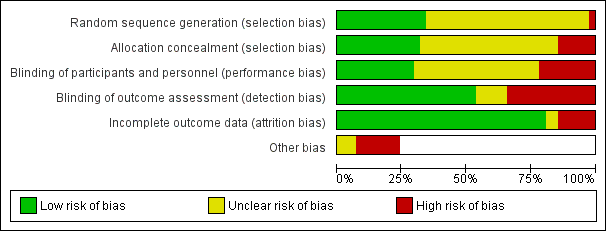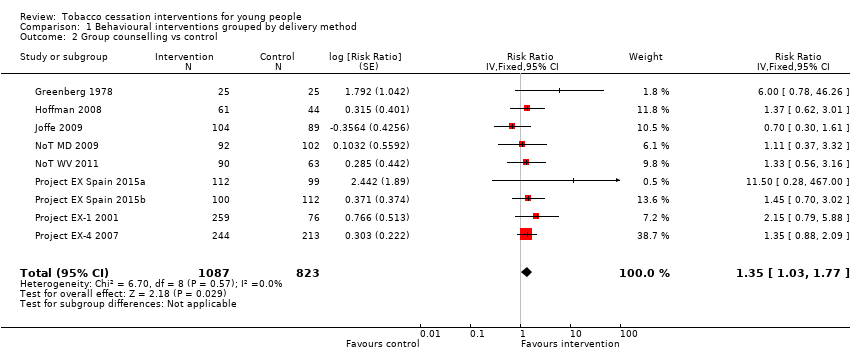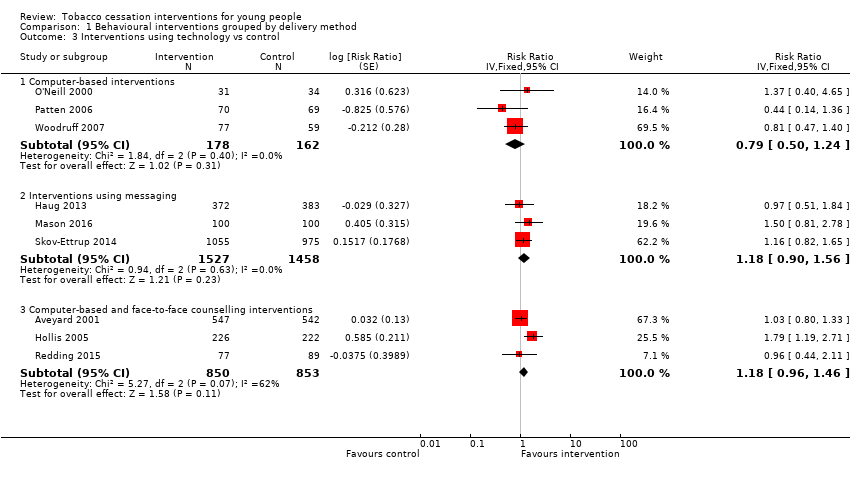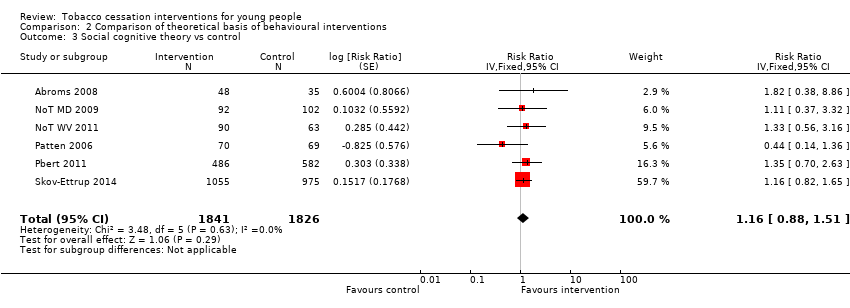Contenido relacionado
Revisiones y protocolos relacionados
Regina M van der Meer, Marc C Willemsen, Filip Smit, Pim Cuijpers | 21 agosto 2013
Daniel T Tsoi, Mamta Porwal, Angela C Webster | 28 febrero 2013
Kate Cahill, Sarah Stevens, Rafael Perera, Tim Lancaster | 31 mayo 2013
Dennis Thomas, Michael J Abramson, Billie Bonevski, Johnson George | 10 febrero 2017
Nicola Lindson, Elias Klemperer, Bosun Hong, José M Ordóñez‐Mena, Paul Aveyard | 30 septiembre 2019
Taghrid Asfar, Jonathan Livingstone-Banks, Kenneth D Ward, Thomas Eissenberg, Olusanya Oluwole, Zoran Bursac, Tarek Ghaddar, Wasim Maziak | 7 junio 2023
Dorie Apollonio, Rose Philipps, Lisa Bero | 23 noviembre 2016
Intervenciones farmacológicas para la promoción del abandono del hábito de fumar durante el embarazo
Ravinder Claire, Catherine Chamberlain, Mary‐Ann Davey, Sue E Cooper, Ivan Berlin, Jo Leonardi‐Bee, Tim Coleman | 4 marzo 2020
Jon O Ebbert, Muhamad Y Elrashidi, Lindsay F Stead | 26 octubre 2015
Gareth J Hollands, Felix Naughton, Amanda Farley, Nicola Lindson, Paul Aveyard | 16 agosto 2019
Podcast relacionado
Respuestas clínicas Cochrane
Jane Burch, Sera Tort | 4 abril 2018
















